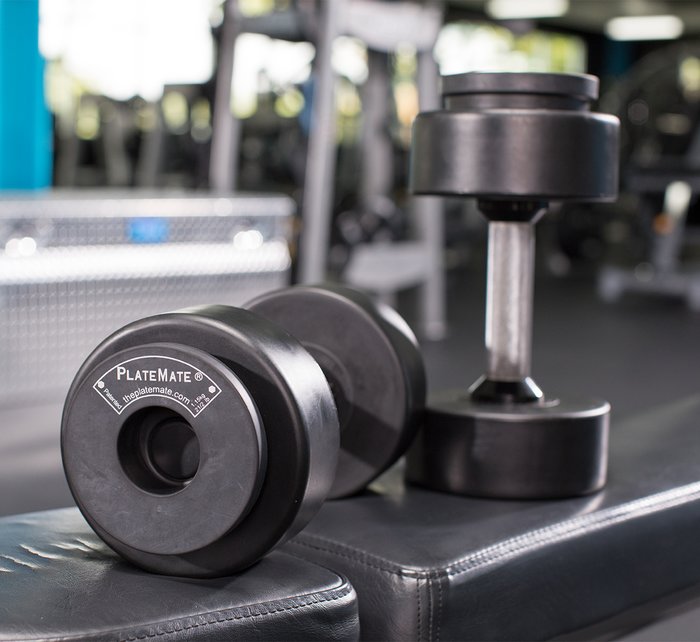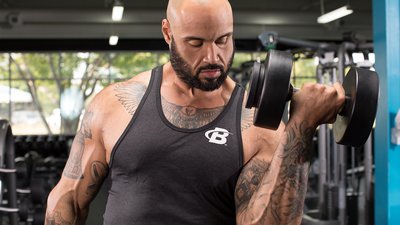When you pick up a pair of dumbbells to perform some curls, where do you hold them? Most likely in the middle. Or, if you're the type who has been reading bodybuilding and strength-training articles for the last few decades, you might hold them an inch or two from the middle, so your thumb is pressed up against the weight.
Why? Holding a dumbbell off-center, often referred to as an "offset" grip, will tip the balance of the weight toward one side and influence muscle involvement on various movements. For instance, using an offset grip, where the thumb is pressed against the inside of the weight, increases the involvement of the short head of the biceps. Grab it on the other side, with the pinky up against the weight, and you can make triceps extension movements more difficult at lockout.
If this is news to you, great! Try it once, and you'll be amazed at how different it feels. But you can take the same idea further, both with your lifting technique and with some strategic accesories.
Offset-Weight Curl and Extension
The reason the offset grip works is because it makes one side of the dumbbell slightly heavier than the other. You can further amplify this effect by actually adding weight to one side of the dumbbell.
There are a couple of ways to do this. If you have a plate-loaded dumbbell setup, add 2.5 pounds to one side of the dumbbell. If you don't have a plate-loaded setup, you can attach a magnetic weight, such as the ones made by PlateMate, to the opposite side.

It becomes obvious once you perform the exercises, but it's worth repeating on the front end:
For curls: Grip the dumbbell with your thumb pressed against the inside of the weight, and add extra weight to the opposite (pinky) side of the dumbbell.
For skull-crushers or extensions: Grip the dumbbell with your pinky pressed against the inside of the weight, and add extra weight to the opposite (thumb) side of the dumbbell.
Twisting Offset-Grip Dumbbell Curl
You can emphasize or amplify the offset technique by adding a simple twist to your curls. This works for both the standard offset curl, and the variation with added weight on one side.
First, I recommend performing these seated. Use the offset grip described above, but start your curl in a neutral (hammer-style) position with the palms facing each other at the bottom of the movement. Curl the weight up, and as the dumbbells clear your thighs, twist (supinate) your wrists so that your palms are facing your shoulders at the top of the movement. Then, reverse the motion back to the beginning position.
This elbow flexion exercise will increase the involvement of the muscles that supinate your forearm, which include not only the biceps, but also the brachioradialis and supinator muscles, which are largely in the forearms.
Twisting Offset-Grip Dumbbell Triceps Extension
Adding a twist to the triceps movement won't do a lot for your triceps, but it'll boost involvement of muscles in the forearm, such as the forearm pronator muscles (pronator teres and pronator quadratus), and the anconeus, a small muscle behind the elbow. Make no mistake, though: Your triceps will still be seriously working at the top of the movement!

This move starts as a typical lying dumbbell triceps extension, but instead of keeping your hands in a neutral position throughout the entire movement, twist (pronate) your forearms as you raise the weight, so that you end in a position similar to the top of a dumbbell bench press. Then, reverse the motion back down to the start position.
As with the curls, it's crucial to offset the grip on the correct side, and to make sure that any added weight is on the correct side as well.
The Offset Superset
These two exercises pair well together. They're two antagonistic movements that don't require much equipment or space. All you need is a pair of dumbbells and a bench. The magnetic weights make a nice addition, but are not mandatory.
I recommend doing these exercises in a superset fashion with moderate rest intervals, or with little to no rest in between. Add them to your repertoire and let me know how it feels in the comments!

